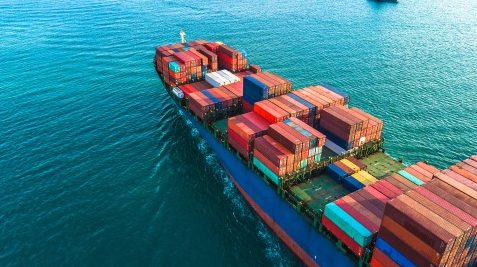With signs of US imports from Asia recovering, trans-Pacific carriers today will impose a highly unusual third general rate increase (GRI) in one month’s time. Importers and other shippers say carriers, who filed July 1 GRIs as high as $1,500 with US regulators, this week are quoting additional figures as high as $800 or more per FEU.
There’s nothing new about carriers levying such charges as the summer-fall peak shipping season for retailers approaches. However, carriers previously implemented GRIs on June 1 and June 15, so the July 1 increase will be the third in a 30 day period, an unusual occurrence even during periods of high demand. Carriers and shippers told JOC rates will continue to rise even though volumes are down almost 10 percent from the first five months of 2019.
Several carriers last month filed July 1 GRIs with the Federal Maritime Commission; Carriers rarely succeed in implementing the full GRIs they post with the FMC.
The NVOs and BCOs said some carriers are indicating that peak-season surcharges may be charged on top of the GRIs. In past years, carriers often began to quote PSSs in June or July, but the peak-season surcharges were delayed until early fall, when the majority of holiday merchandise is shipped.
Carriers, meanwhile, told JOC space on vessels leaving Asia is tight due to an unexpected surge in imports since late May. This is driven primarily by retailers replenishing their inventories and the reopening of businesses and manufacturing plants previously closed because of the coronavirus disease 2019 (COVID-19).
Uffe Ostergaard, president of Hapag-Lloyd USA, said the carrier files a standard GRI every two weeks in order to provide flexibility to adjust to market conditions, so the carrier does not necessarily expect to achieve the full amount. However, current conditions point to a GRI going forward.
Spot rates to Southern California surge
GRIs imposed by the carriers in June are reflected in eastbound spot rates that have spiked despite a precipitous drop in volumes amid the COVID-19 crisis. As of June 26, spot pricing from China to the US West Coast had risen 94.8 percent from the same week last year, according to the Shanghai Containerized Freight Index (SCFI), while rates to the East Coast jumped 37.4 percent year over year per FEU.
The combination of blank sailings and the increase in consumer demand this past month has had the greatest impact on spot rates in the Pacific Southwest services to Los Angeles-Long Beach. Space has been “very tight” on the PSW services.
In addition to replenishing inventories, retailers and manufacturers are looking ahead to August when some of the tariff exclusions in the Phase One trade agreement between the US and China are set to expire. Given the uncertainty of US-China trade relations, importers are focusing on the Asia-Los Angeles routing, which is 10 days to two weeks faster than all-water services to the East Coast, in order to ensure that their products enter the country and clear US Customs in case the tariff exclusions are not extended.
Nevertheless, spot rates to both coasts are elevated. A logistics executive noted that the price of low-sulfur fuel that most vessels now burn is down 50 to 60 percent from the January peak, meaning that when the bunker component is removed from the all-inclusive rate, the transportation component is disproportionately high when compared with previous years. “Take out the price of fuel, and the [spot] rate is probably the highest in history,” he said.
Carriers backing off from blank sailings
So far, carriers have announced only four blank sailings for July and August, according to Sea-Intelligence. “It is too early to say if this reflects a genuine market strength, or if the carriers simply haven’t gotten around to announcing for this period yet,” said Sea-Intelligence CEO.
Shippers contend that earlier this spring, when economic prospects looked discouraging, carriers overestimated how many blank sailings they needed in order to balance supply and demand. Carriers from early February through April blanked more than 150 sailings from Asia to North America. However, even as import volumes began to rise in May, carriers announced more than 75 blank sailings for May and June, although some previously announced blanked sailings were reinstated.
Shippers and carriers all agree that container volumes — and pricing — for July and August remain uncertain.
Source: JOC


